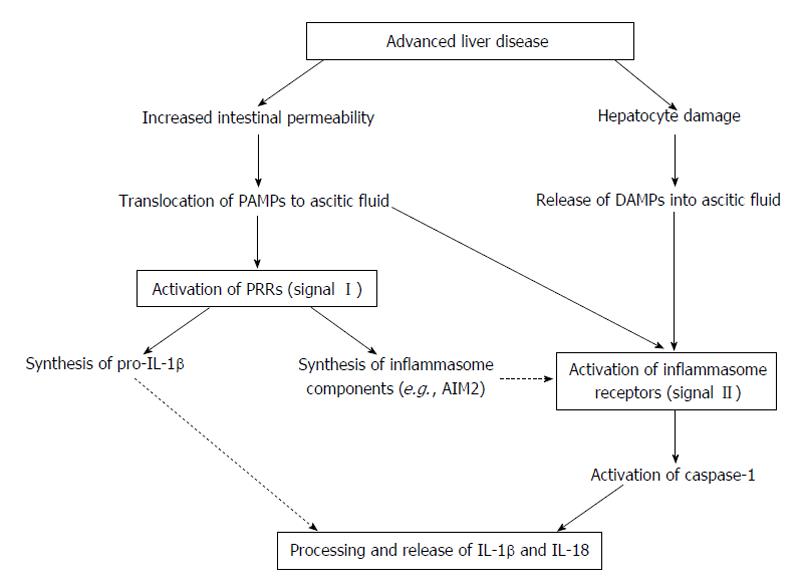Copyright
©The Author(s) 2016.
World J Hepatol. Feb 8, 2016; 8(4): 207-210
Published online Feb 8, 2016. doi: 10.4254/wjh.v8.i4.207
Published online Feb 8, 2016. doi: 10.4254/wjh.v8.i4.207
Figure 2 Theoretical mechanism of inflammasome activation in ascitic fluid.
Advanced cirrhosis is typically associated with overgrowth of intestinal bacteria and increased intestinal permeability, which results in the translocation of bacterial products (e.g., DNA or LPS) to the ascitic fluid. The presence of these PAMPs activates PRRs in innate immune cells of the ascitic fluid, inducing the synthesis of IL-1β and IL-18 precursors and inflammasome components (signal I). At the same time, continuous liver damage (e.g., by virus or alcohol) would result in hepatocyte death and release of DAMPs (e.g., host dsDNA). These DAMPs (and probably new translocation events of PAMPs from the intestinal lumen) would activate inflammasome-forming receptors such as AIM2 (providing signal II), which in turn results in the activation of caspase-1 and the maturation and release of IL-1β and IL-18 into the ascitic fluid. IL: Interleukin; PAMPs: Pathogen-associated molecular patterns; DAMPs: Damage-associated molecular patterns; AIM2: Absent in melanoma 2; dsDNA: Double-stranded DNA; PRRs: Pattern recognition receptors; LPS: Lipopolysaccharide.
- Citation: González-Navajas JM. Inflammasome activation in decompensated liver cirrhosis. World J Hepatol 2016; 8(4): 207-210
- URL: https://www.wjgnet.com/1948-5182/full/v8/i4/207.htm
- DOI: https://dx.doi.org/10.4254/wjh.v8.i4.207









